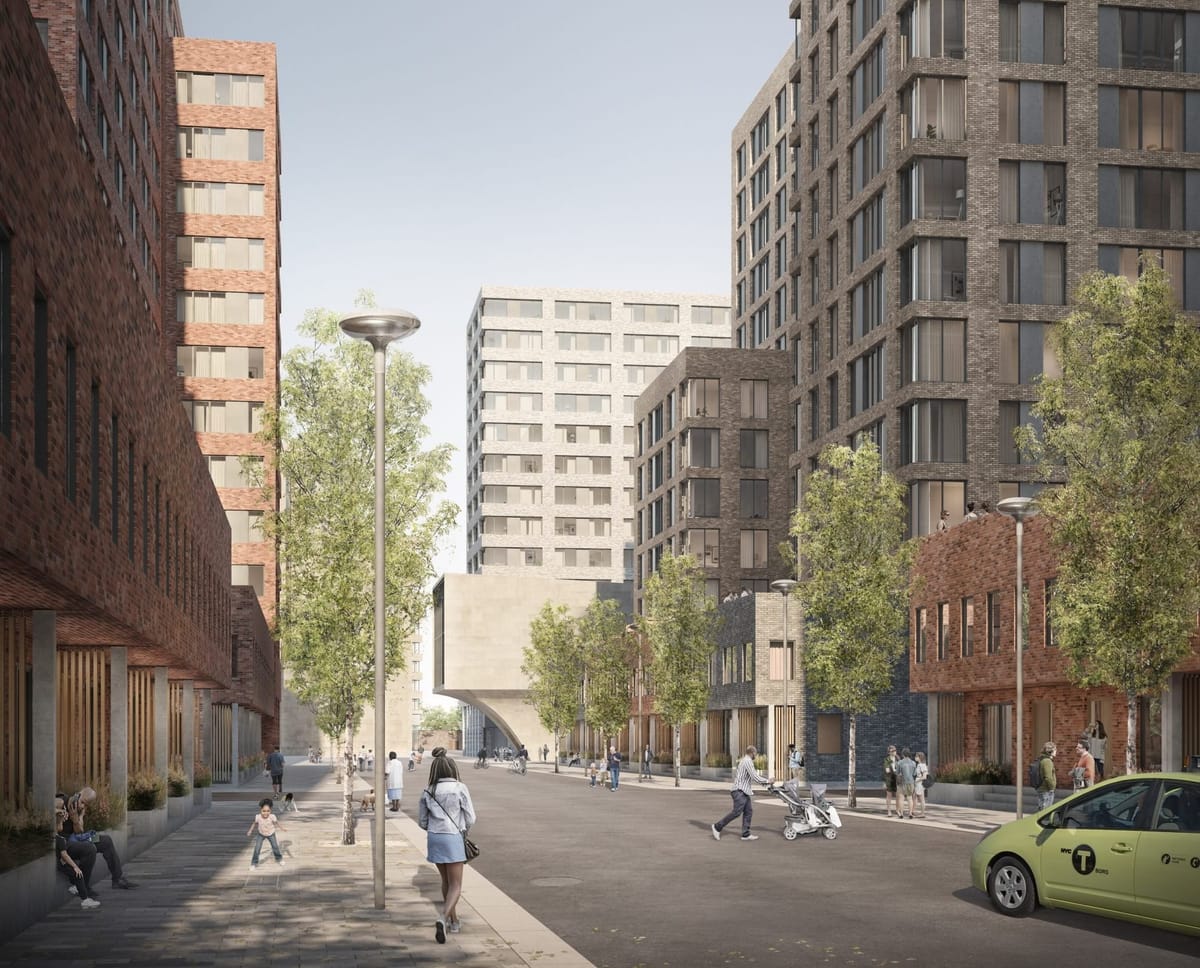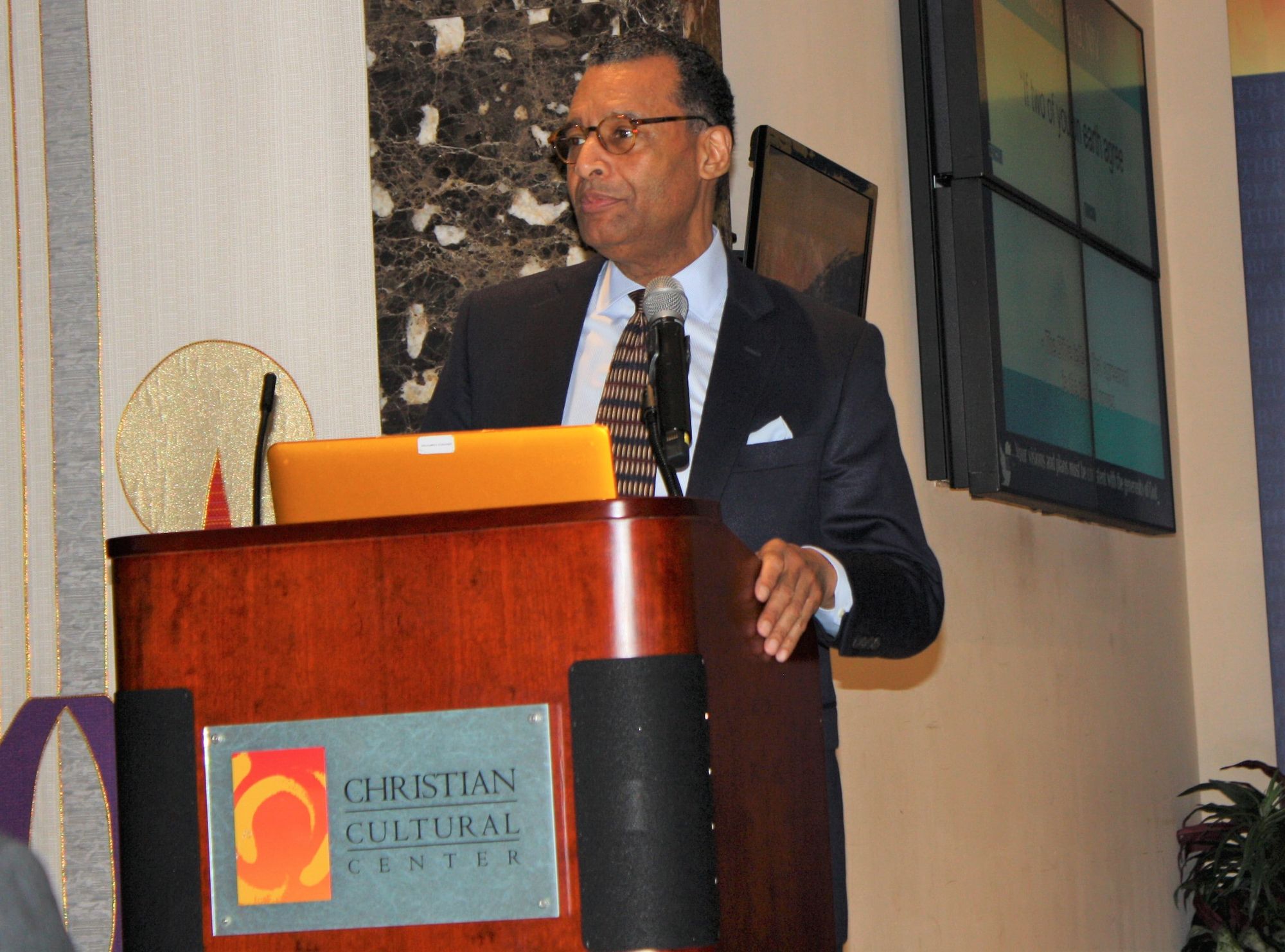Proposed Urban Village Development To Bring Over 2,000 Affordable Units To East New York


EAST NEW YORK — Yesterday, at a NYC City Planning Department public hearing, the Rev. A.R. Bernard described the area surrounding his East New York megachurch, Christian Cultural Center (CCC), when it first opened its doors in the community.
“When we purchased this property back in the ’90s, this was a sex trafficking corridor, drugs, prostitution and gangs,” he recalled, noting that CCC helped to transform the area.
“We are excited about the opportunities ahead,” the minister continued. “Urban Village is one of those opportunities.”
Bernard envisions creating a development, which he dubbed “Urban Village,” on 10.5 acres of CCC’s property located on Flatlands Avenue near Starrett City.
It would include more than 2,100 rent-stabilized residential units for low to middle-income residents, along with other impressive amenities. He described it as a “mixed-income, livable, walkable, sustainable community that includes homeownership opportunities without displacement.”
City Planning held a public scope meeting Tuesday at CCC. The purpose of the meeting was to allow for public discussion of the proposed project. Urban Village is a 50/50 venture between CCC and developer Gotham Organization.

Urban Village, which would take about 10 years to complete after approval, received widespread support at the meeting from those who stood to speak.
The proposed project aligns with the goals of the Local Development Corporation of East New York, said Bill Wilkins, the organization’s director of economic development and housing.
“I, without hesitation or reservation, support the development of this project,” said Wilkins who warned that the “Manhattanization of Brooklyn is reaching the shores of East New York.”
Charles Bullock, a member of East New York’s community board 5, speaking on his own behalf, said the development would deliver much needed “upliftment” to local residents. Bullock, a carpenter, added that the educational component of the Urban Village project would provide opportunities for East New Yorkers to move into the middle class.
Isaiah Thomas, a 23-year-old man who has lived in East New York since 2000, stated that crime and negative influences in the community compelled his family to send him away to boarding school and college. He praised Bernard for helping to turn around the community.
Bernard said he wants to help make East New York “a destination, not a place to escape from.”
The pastor pledged that the housing units would be 100% rent-stabilized. At least 50% of the units are designated for people with extremely low-income, and 25% for low to moderate-income, and up to 267 units for low-income seniors. Urban Village’s amenities would include retail and grocery stores, a new performing arts center, a vocational and elementary school, 26 affordable maisonette houses for ownership, and lots of green space.
Transforming East New York into a destination requires management to avoid the displacement of longtime residents that has sparked controversy in neighborhoods like Bed-Stuy and Crown Heights. In the background of all the upbeat discussion on Tuesday is concern about gentrification – which no one voiced at that meeting.

In 2018, City Councilwoman Inez Barron, whose district encompasses CCC’s sprawling campus, told the New York Times that she had concerns about whether Urban Village would be truly affordable for the community’s lowest income earners.
Urban Village could unintentionally help to ignite a wave of luxury housing construction in other pockets of the neighborhood. Community leaders and elected officials are being vigilant.
Community Board 5 and State Sen. Julia Salazar, whose 18th district includes a section of East New York, announced a public hearing on March 5 to create a cease and desist zone to “stop predatory real estate activity” in the neighborhood.
Community stakeholders can request New York’s State Department to designate their community as a cease and desist zone to eliminate aggressive real estate solicitation. At the hearing, affected homeowners are expected to testify that they were targeted by real estate brokers. If the state agrees, then local homeowners could add their name to a list to stop the solicitations.
Other neighborhoods, like Bedford – Stuyvesant and Crown Heights, are better known as hotbeds for deed theft and other property schemes, as gentrification causes the value of once undesirable brownstones there to skyrocket. Fewer people realize that deed theft and “real estate scams” are increasingly happening in East New York, activists said at CB5’s February meeting.
There’s still an opportunity to weigh in on the Urban Village project. The City Planning Department will accept statements through March 13th via email: 20DC057K_DL@planning.nyc.gov.




